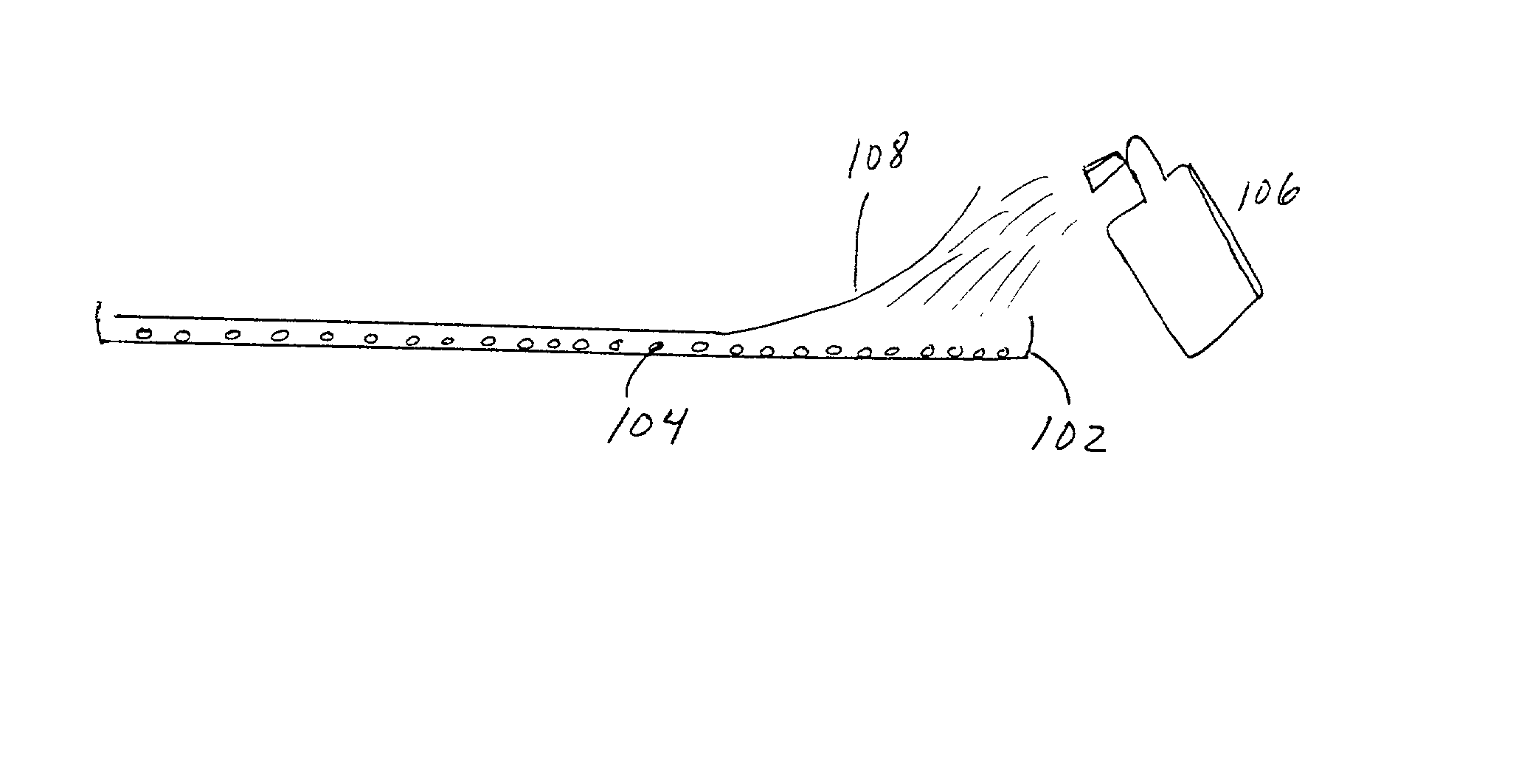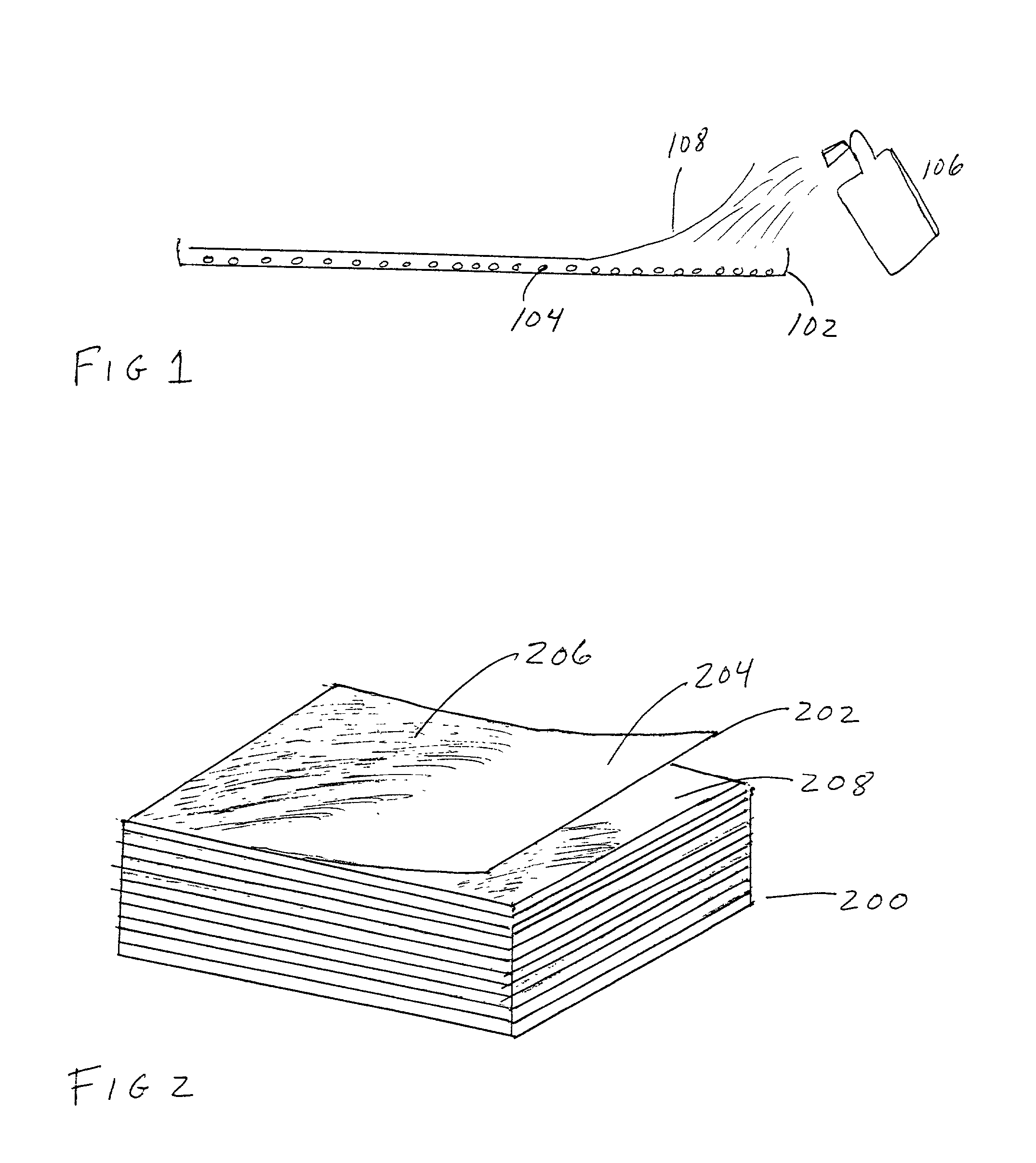Method and substance for obtaining surfaces with antimicrobial properties
a technology of surface antimicrobial properties and antimicrobial agents, which is applied in the direction of biocide, animal repellents, and waste gathering, etc., can solve the problems of health hazards, insufficient cleaning and disinfection, and health risks for people with allergies or chemical sensitivities
- Summary
- Abstract
- Description
- Claims
- Application Information
AI Technical Summary
Benefits of technology
Problems solved by technology
Method used
Image
Examples
example 2
[0028] In another preferred embodiment, a multitude of layers are assembled like pad 200 to form a work surface. (See FIG. 2) Each layer consists of a sheet 202 with each sheet protecting next lower sheet 208. The upper surface 204 of each sheet 202 is coated with photosensitizer formulation. 206. Sheets 202 are opaque to the activation illumination wavelength of the photosensitizer and serve to protect next lower sheet 208. When the antimicrobial activity of photosensitizer formulation 206 on sheet 202 starts to diminish, sheet 202 is stripped off to reveal next lower sheet 208 whose antimicrobial properties are activated when illuminated by the selected light sources. Additional sheets are stripped off as required.
[0029] One particular application of this embodiment would be in the food services industry where bacteria and food poisoning are great concerns. By having a multitude of sheets coated with a photosensitizer formulation, a renewable antimicrobial-resistant work surface i...
PUM
| Property | Measurement | Unit |
|---|---|---|
| solution | aaaaa | aaaaa |
| chemical sensitivities | aaaaa | aaaaa |
| transparent | aaaaa | aaaaa |
Abstract
Description
Claims
Application Information
 Login to View More
Login to View More - R&D
- Intellectual Property
- Life Sciences
- Materials
- Tech Scout
- Unparalleled Data Quality
- Higher Quality Content
- 60% Fewer Hallucinations
Browse by: Latest US Patents, China's latest patents, Technical Efficacy Thesaurus, Application Domain, Technology Topic, Popular Technical Reports.
© 2025 PatSnap. All rights reserved.Legal|Privacy policy|Modern Slavery Act Transparency Statement|Sitemap|About US| Contact US: help@patsnap.com


